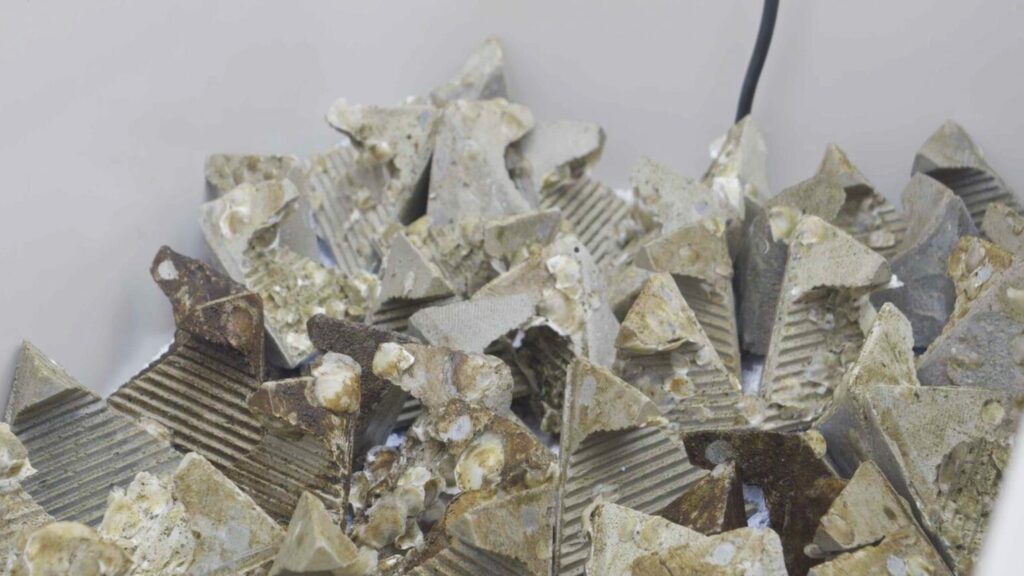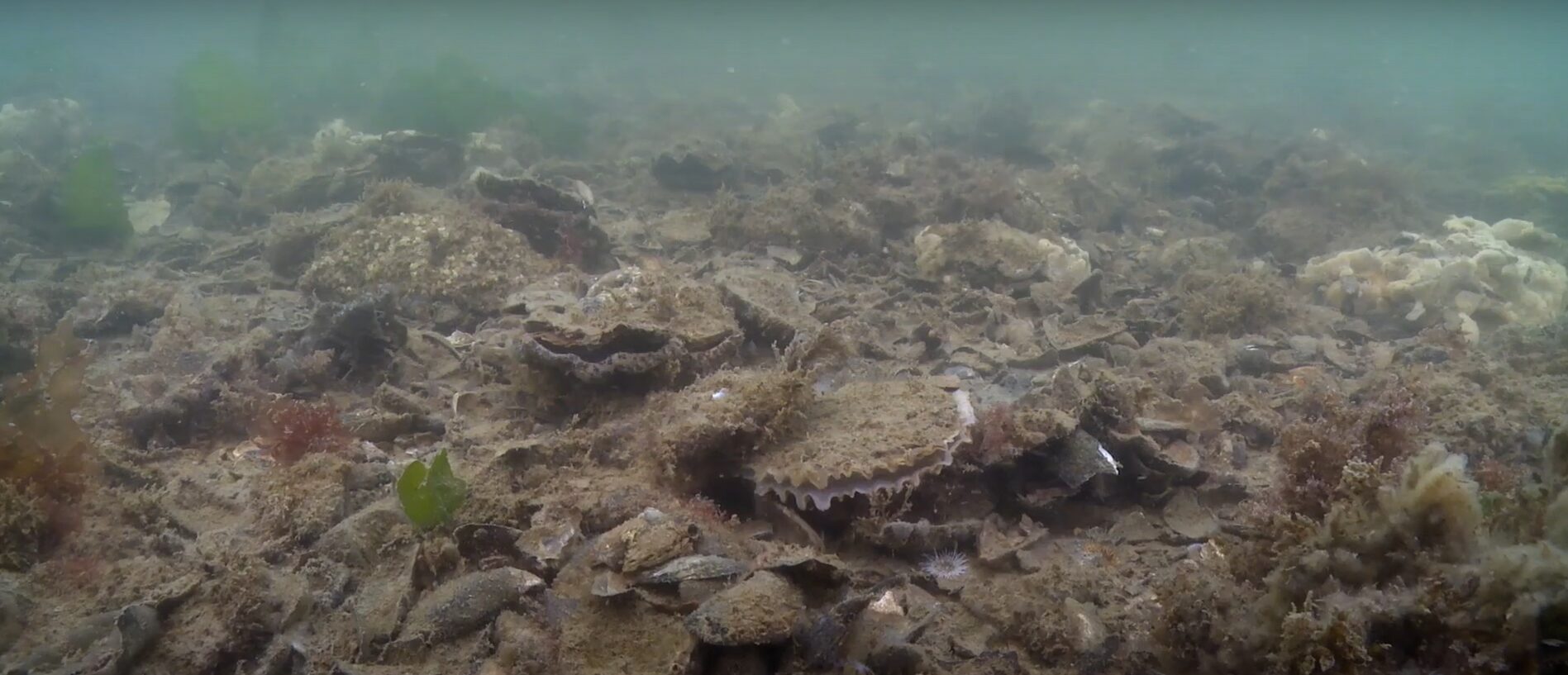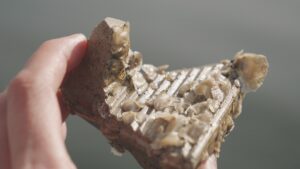Hatchery Experiment Results
The results showed no significant difference in oyster settlement across material compositions, though materials without calcium had the lowest settlement. While calcium-rich materials showed slightly higher settlement, the overall differences were inconclusive, as all materials were successfully colonized. AI monitoring achieved a promising 73% detection rate for the test set and 92% for the validation set. Although surface area measurements were inconsistent due to photo quality issues, the AI method shows strong potential. The model is accessible via an online interface (see links to the right), allowing real-time spat detection.
Nearshore Experiment Results
Monitoring improved significantly when transitioning from manual ROVs to the AUV. The ROV was challenging to navigate and lacked GPS-linked imagery, making it difficult to analyze the ReefBooster distribution. After initial adjustments, the AUV produced reliable georeferenced maps, especially when operating within 1 meter of the seabed.
The AI model used for spat recognition in the hatchery was applied to AUV imagery, but with mixed results: 48% accuracy for ReefBoosters and 10% for spat, highlighting the need for a larger training data set or closer seabed proximity during surveys. Initial monitoring produced a clear map, which revealed that the original ReefBooster design performed better than the simplified version, with fewer than 5% landing in an unfavorable position compared to 36% for the simplified design. Poor visibility, high sediment siltation, and dredging activities hindered subsequent surveys and limited long-term hydrodynamic analysis.
ReefBoosters anchored to sediment or attached to lines were unaffected by monitoring challenges. After one year, phyla diversity on ReefBoosters varied little across compositions, though lime and shell powder supported the highest diversity. ReefBoosters with 10% gypsum degraded almost completely within a year, which suggests further research is needed to optimize gypsum concentrations for a lifespan of 5-20 years.








